We all like our creature comforts and after we are fed, watered, connected to the internet and sheltered from the elements, the next most important issue is keeping warm.
At home, we are used to gas or electric central heating, kicking in as soon as the temperatures drops, but on narrowboats, slightly different solutions are found. The two most common methods of heating boats until the late 1990s, were the calor gas fuelled “Alde” boiler or the multi-fuel stove. Both of these could be connected to a series of radiators running through the boat (a back boiler was required for the stove) and were very effective if expensive methods of heating the boat.
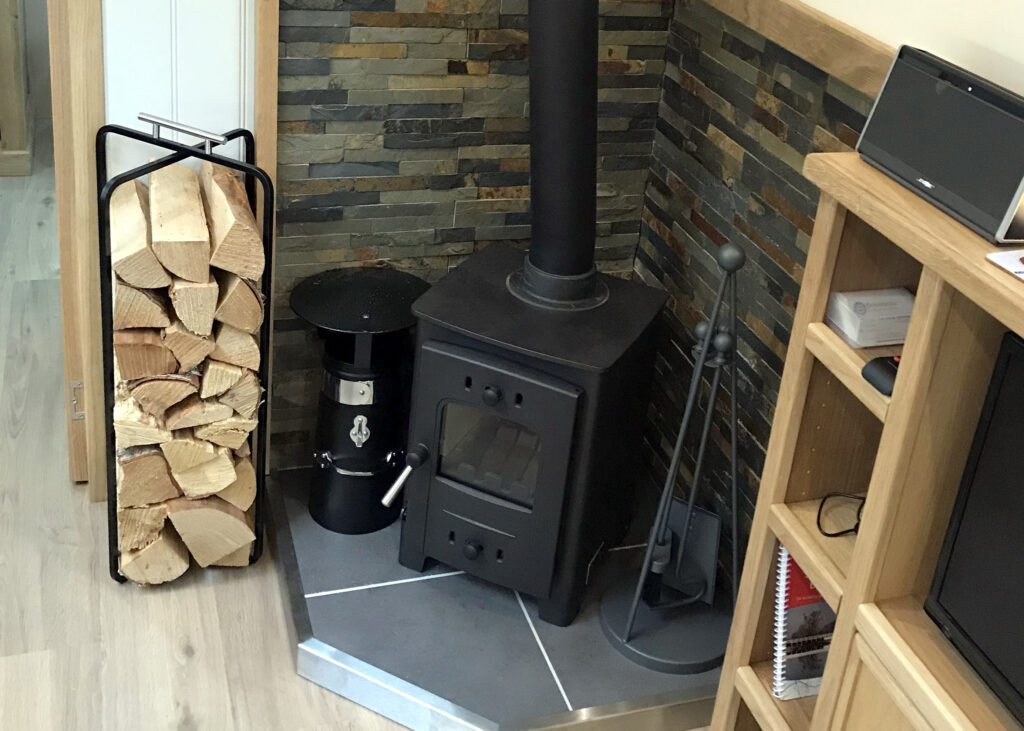
In more recent years the most popular method of heating a narrowboat has been the diesel fired boiler and companies such as Webasto, Mikuni, Hurricane and Eberspächer all offer quiet and efficient diesel fuelled water heaters that can heat the boat and the hot water supply. For Old Nick, we will be having an Eberspächer HS3 D4E (12v) which is one of their latest and most popular models and found in all sorts of vehicles – not just narrowboats.
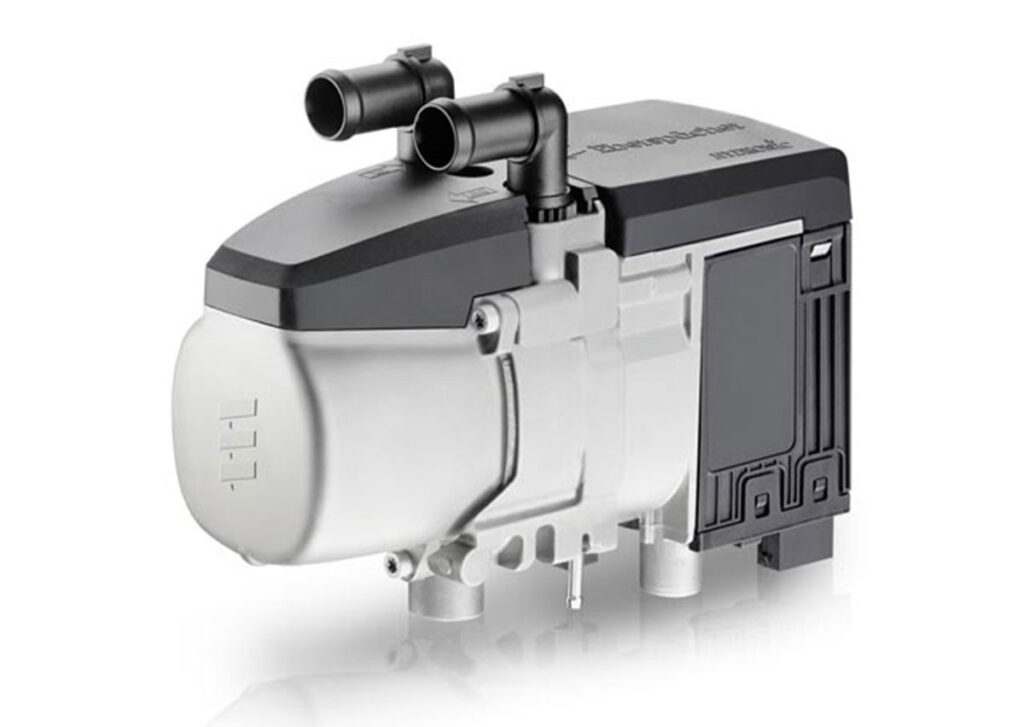
The Eberspächer system consists of the heater unit, a water pump, diesel fuel metering pump, exhaust, controller and all the connecting pipework. It will be plumbed in to the same diesel tank as the generator uses and it’s efficient combustion chamber and convector should result in consumption figures of between 0.11 to 0.51 litres/hour.
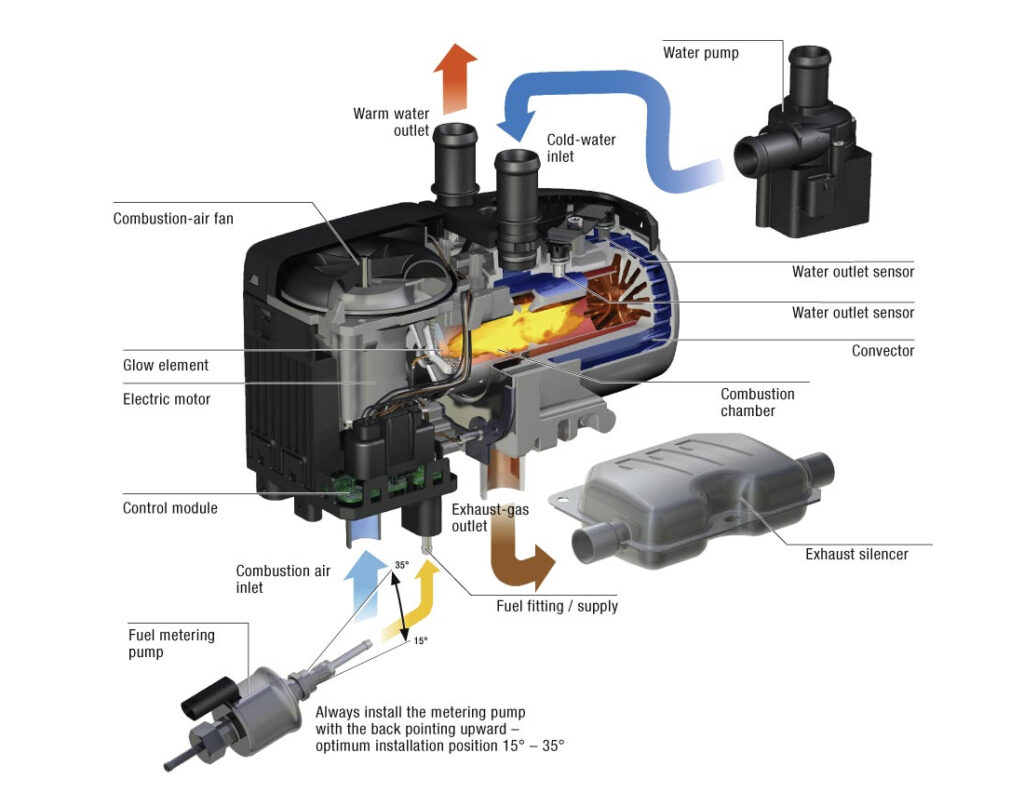
The Eberspächer will not only heat the boat but also the hot water, which it does via a Vetus WHT50 calorifier. A calorifier is a very efficient hot water tank that indirectly heats the water via other heat producing devices. It then stores the hot water for later use in a well insulated stainless steel tank.
One of the reasons we chose a Vetus WHT50 calorifier, was it’s two independent heat coils, through which hot water is pumped, heating the water inside the tank. The first coil will be connected to the Eberspächer, while the second coil will be connected to the Generator. Whenever we run the generator to charge the batteries, we will also be using the coolant water from the generator to heat the hot water.
A diagram of the system is shown below. For simplicity, I have not shown all of the components of the system such as shut-off valves, header tank, extra radiators, etc. but, rest assured, these will all be fitted in the relevant locations.
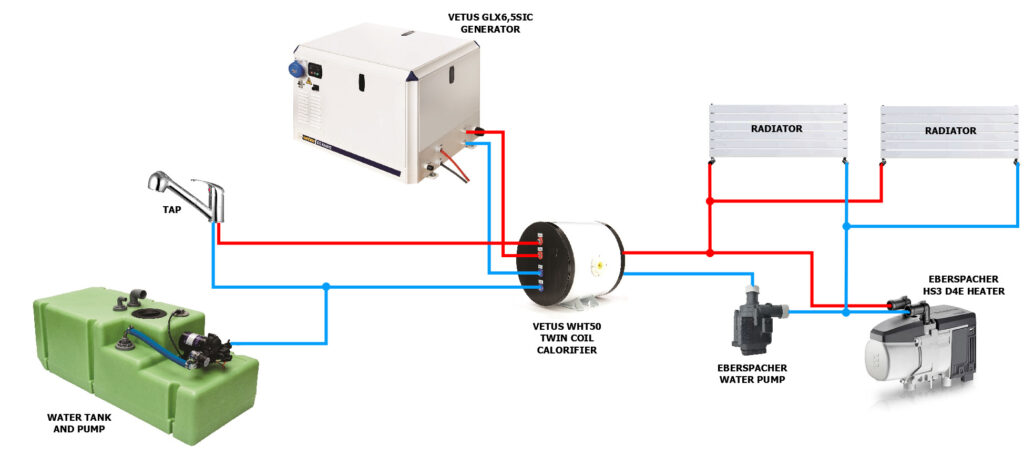
Finally, there is one last method of heating the water and that is a good old fashioned immersion heater element. Although not the most efficient method, as it consumes 1500W, we will be using the surplus electrical energy, generated by our solar panels during the summer months. By using this free energy source, we should be able to avoid running the Eberspächer or generator for at least 4-6 months each year.

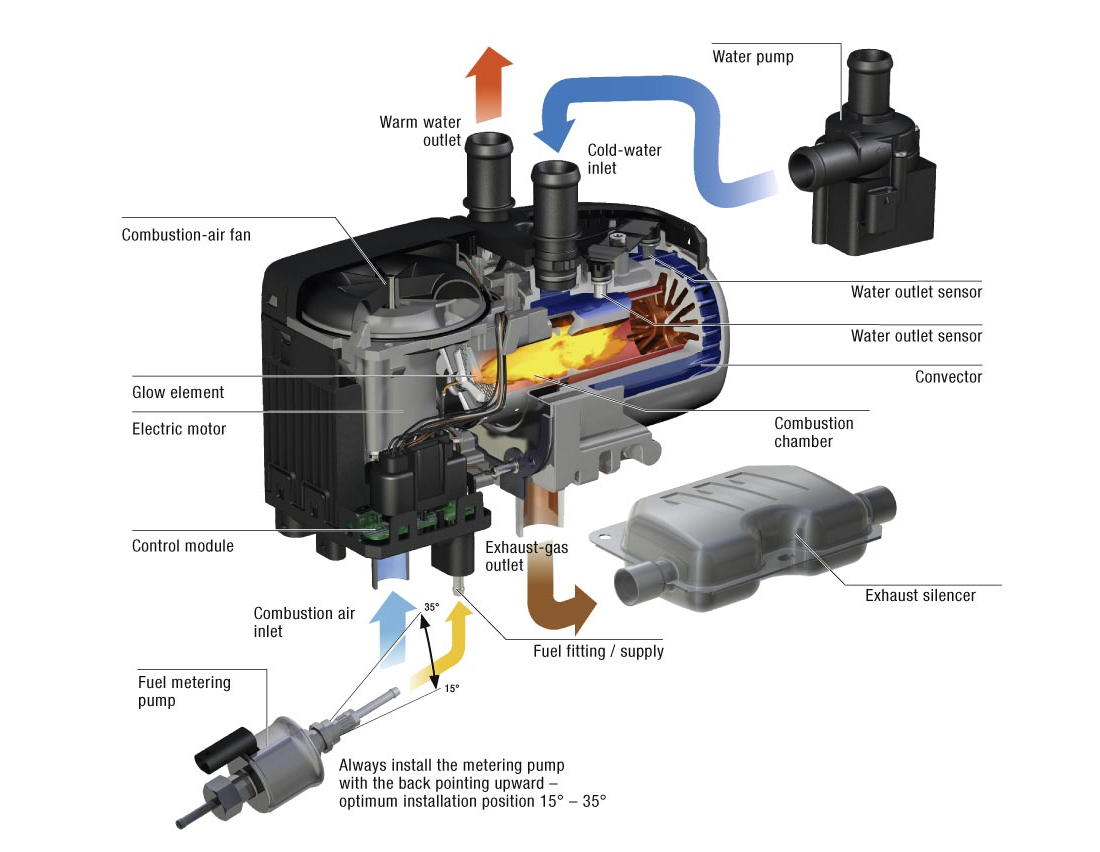
All sounds eminently well-thought out – as one would expect!!
I would be interested to know where most of the heating comes from during the winter months. Obviously the generator will get a bit of use during this time and possibly the Eberspächer heater may not be needed. Hopefully during the summer your surplus solar may provide sufficient hot water. Another question is the fuel consumption comparison between the Eberspächer and the generator. Quite a complex comparison as the generator also provides electricity.
Also I have not found your cooking set up on the site yet and maybe the answer is there already. On some large boats I have been on the genset was started when high electrical demands were expected such as cooking in the fully electric kitchen or water heating. The use of another fuel, gas/propane, was avoided.
Glad to see you have avoided the multi fuel stove which, while they provide a pleasant atmosphere, are inefficient, expensive to run, rather messy and take up valuable space.
Hi David. In winter, heating is solely provided by the Eberspacher and our water is heated by the immersion heater. We are all electric for cooking (an oven and an induction hob, plus microwave). No gas on board. We had hoped to have plenty of stats by now, but thanks to Covid, no cruising is allowed. We thus are on a mix of solar and shore power – with a bias in favour of the shore, it being winter. On our best solar yield day to date, we generated around 2KWh. We will be publishing loads more stats as soon as we have some meaningful data. Thanks for your interest.
Thank you for your response. I live in Australia on the south coast of NSW. A cold day is 10degC. We have a slow combustion heater which burns wood. Collecting fallen wood is actively encouraged and there is plenty. In fact I have a neighbour who cuts and splits it and even helps load it into my trailer. Everyone is keen to clear any fallen timber away from their houses (bushfires). If we run the heater flat out in the depths of winter we may have to open the doors/windows to cool down. Living on a boat in Australia, NSW, requires one to put on a wooly jumper in the depths of winter. The coastal water temperature rarely drops below 16dC. Boat heating is not thought about.
In your diagrams I noticed the calorifer is twin coil. I suspect one coil for the Eberspacher and one for the generator. The coolant for the Eberspacher and the generator do not go into your hot water, they just heat it. Am I correct? I thought the hot water ran through the central heating, but I think only the Eberspacher coolant circulates through the central heating and is circulated by the Eberspacher pump. So if you want to stay warm you must run the Eberspacher. The immersion heater just heats your hot water. Does the marina charge a KWH rate or just a fee to plug in? This policy varies around Australia.
The other solution for heating I have heard of is electric panel heaters. This is mentioned for the http://mothershipmarine.com/narrowboat/ Shine where she was wired for electric panel heaters. Did you consider this heating solution?
Love to cruise the English Waterways in an Electric Narrowboat.
David
Hi David, sorry only just spotted your comment. The calorifier is configured as you suspected, but as the generator is intended to be run as infrequently as possible, I am in no way relying on this form of water heating.
Most of the time we will use the immersion heater which will be free (solar) in the summer and use up the electricity top-up cards that our marina sell in the winter. Typically it is about £0.15 to £0.20 per KWh in UK mariners.
I did not consider electric panel heaters and will check out the link you sent me – thank you. Bit too late for us to change direction but good to learn more about it.
As an electric car drive for the last 10 years and someone who enjoys an occasional canal boat holiday, I hired a 100% battery electric narrowboat on the Monmouthshire Brecon canal for a week in May from Castle Narrowboats. I believe it’s the only canal in the U.K. with serval charging points installed along the canal next to the towpath.
One of my interests is air pollution and thus I have serval air pollution monitoring devices. The electric propulsion of Narrowboats was fabulous eliminating the noise and health damaging fumes from the usual ubiquitous Diesel engine. However I was quite surprised how quickly the levels of NO2 air pollution in the cabin increased once the propane gas hob was lit even with a few of the windows open.
Thus I was wondering if you know of any U.K. canal boat that has installed an induction hob & electric fan oven to eliminate fossil fuel / combustion cooking onboard?
Also do you think it would be possible to replace the central heating diesel heater with an air or water source heat pump to eliminate that source of air and climate pollution or would it require a switch to more energy dense lithium-ion batteries to make it feasible?
Hi Mark. We have no gas on board and have an induction hob and fan oven. Our plan is is to use HVO just as soon as we can to decrease our carbon footprint.